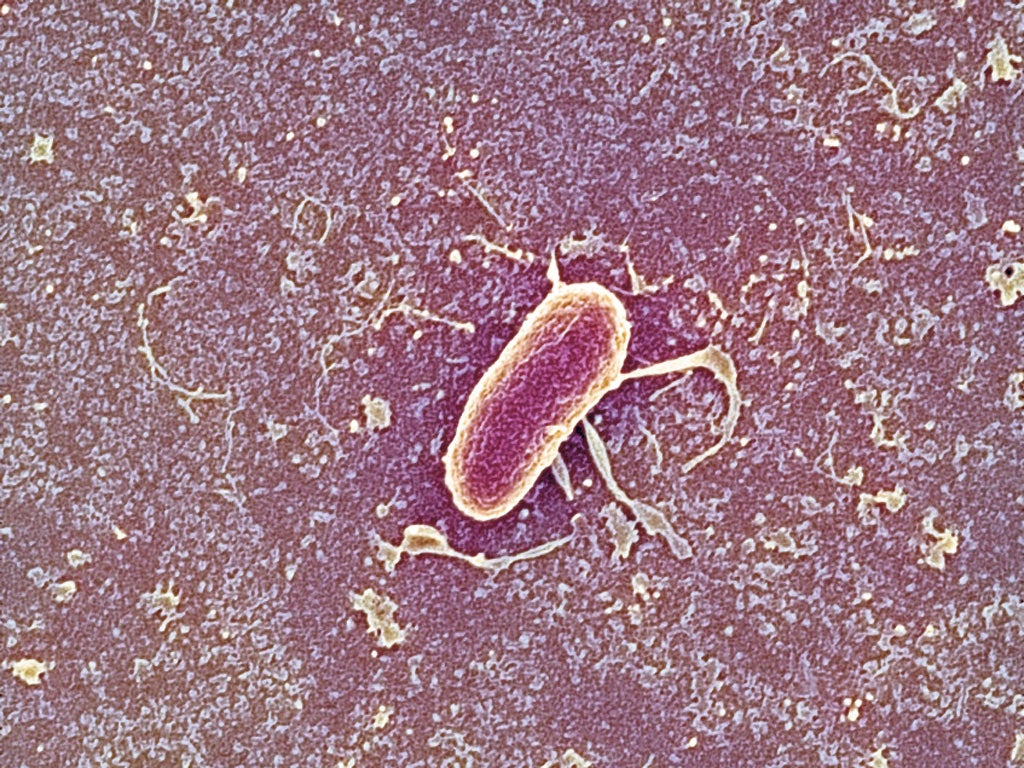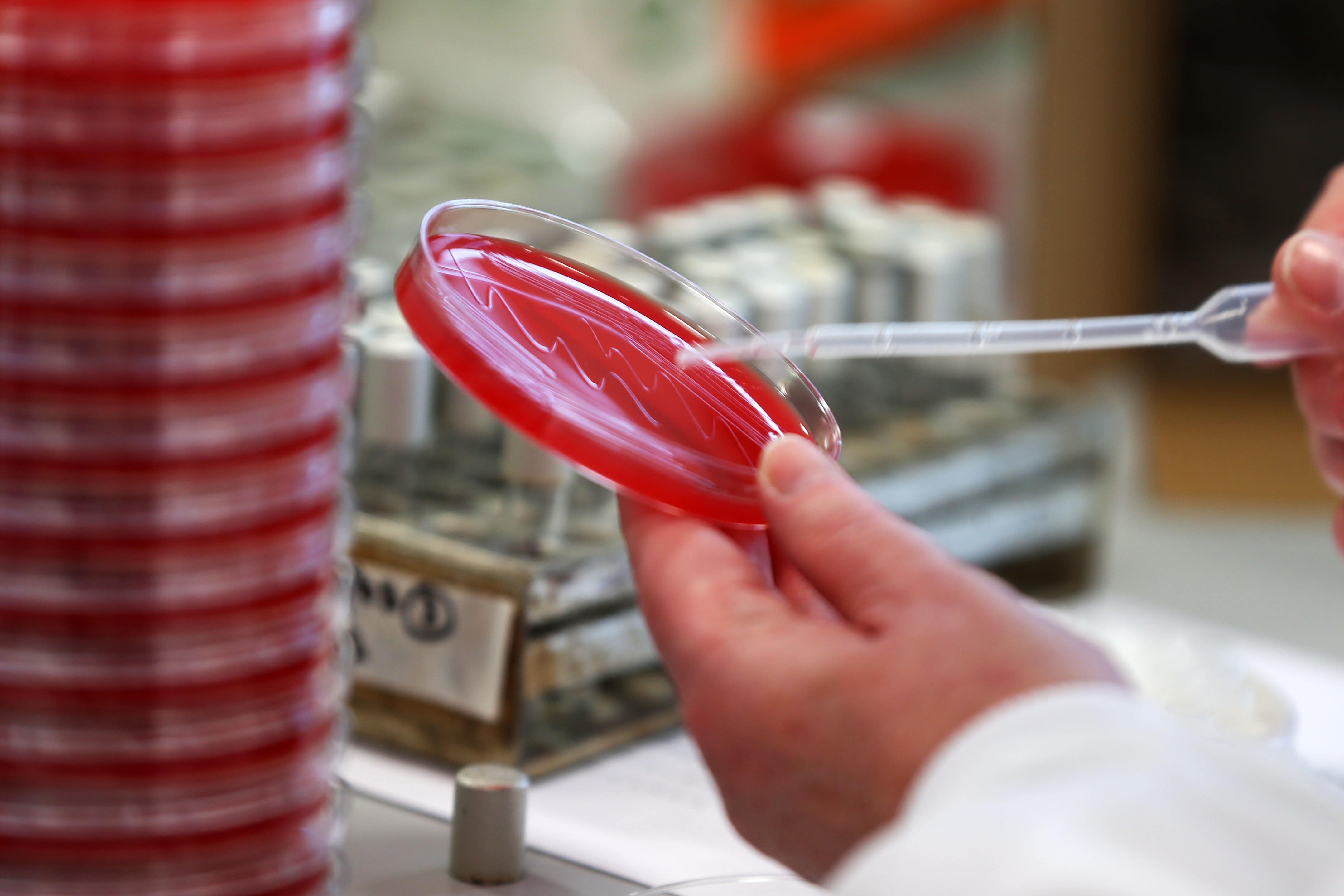Warning more than 39m could die from antibiotic-resistant infections
AMR occurs when bacteria and diseases evolve to no longer respond to drugs designed to treat the infection

Your support helps us to tell the story
From reproductive rights to climate change to Big Tech, The Independent is on the ground when the story is developing. Whether it's investigating the financials of Elon Musk's pro-Trump PAC or producing our latest documentary, 'The A Word', which shines a light on the American women fighting for reproductive rights, we know how important it is to parse out the facts from the messaging.
At such a critical moment in US history, we need reporters on the ground. Your donation allows us to keep sending journalists to speak to both sides of the story.
The Independent is trusted by Americans across the entire political spectrum. And unlike many other quality news outlets, we choose not to lock Americans out of our reporting and analysis with paywalls. We believe quality journalism should be available to everyone, paid for by those who can afford it.
Your support makes all the difference.More than 39 million people could die from antibiotic-resistant infections between now and 2050, scientists have warned.
Researchers say “now is the time to act” to protect people across the world from the threat posed by resistance to drugs that are used to treat infection.
The data indicates that more than one million people died from drug-resistant infections globally each year between 1990 and 2021.
The new worldwide analysis by the Global Research on Antimicrobial Resistance (Gram) project found that antimicrobial resistance (AMR) deaths among children aged under five fell by 50% over this time period.
However, they increased by more than 80% among people aged 70 and older.
The findings, published in The Lancet, highlight the need for measures that combine infection prevention, vaccination, minimising inappropriate antibiotic use and research into new antibiotics to mitigate the number of AMR deaths that are forecast for 2050.
The study also estimates 1.91 million people could potentially die as a direct result of AMR in 2050, an increase of almost 70% per year compared to 2022.

Over the same period, the number of deaths in which AMR bacteria play a role will increase by almost 75% from 4.71 million to 8.22 million per year.
AMR occurs when bacteria and diseases evolve to no longer respond to drugs designed to treat the infection.
Study author Dr Mohsen Naghavi, team leader of the AMR research team at the Institute of Health Metrics (IHME), University of Washington, US, said: “Antimicrobial medicines are one of the cornerstones of modern healthcare and increasing resistance to them is a major cause for concern.
“These findings highlight that AMR has been a significant global health threat for decades and that this threat is growing.”
Dr Kevin Ikuta, of the University of California Los Angeles (UCLA) and affiliate professor at IHME, said the fall in deaths from sepsis and AMR among young children over the past three decades is an incredible achievement, but the threat to older people will only increase as populations age.
He added: “Now is the time to act to protect people around the world from the threat posed by AMR.”
Estimates for the new study were produced for 22 pathogens (organisms that cause disease), 84 pathogen-drug combinations, and 11 infectious conditions (including meningitis, bloodstream infections and other infections) among people of all ages in 204 countries and territories.
The estimates were based on a wide range of sources, including hospital data, death records and antibiotic use data.
Study author Dr Stein Emil Vollset, of the Norwegian Institute of Public Health and affiliate professor at IHME, said: “By 2050, resistant infections could be involved in some eight million deaths each year, either as the direct cause of death or as a contributing factor.
“To prevent this from becoming a deadly reality, we urgently need new strategies to decrease the risk of severe infections through vaccines, new drugs, improved healthcare, better access to existing antibiotics and guidance on how to use them most effectively.”

Dr Colin Brown, deputy director at UKHSA responsible for AMR, said: “This report is another reminder that antibiotic resistance is a threat to all of us – not just in the future but now.
“If more infections continue to become resistant to treatment, lives will continue to be lost and we need universal action to turn this tide.
“We can all help by only taking antibiotics if you have been told to do so by a healthcare professional.
“Do not save some for later or share them with friends and family. Treat antibiotics with respect and they will be there to help us all in the future.”
The researchers estimate that AMR deaths will increase steadily in the coming decades, with 1.91 million annual deaths directly due to AMR projected by 2050 – a 67.5% increase on the 1.14 million deaths in 2021.
By the middle of the century, AMR is also projected to play a role in a broader 8.22 million deaths – an increase of 74.5% on the 4.71 million associated deaths in 2021.
The World Health Organisation (WHO) has described AMR as “one of the top global public health and development threats”.
The new research suggests that future deaths from AMR will be highest in south Asia – which includes countries such as India, Pakistan, and Bangladesh – where a total of 11.8 million deaths directly due to AMR are forecast between 2025 and 2050.
In a separate comment piece, also published in The Lancet, experts have warned that without immediate action, humanity will face a potentially disastrous escalation in resistance in fungal disease.
The piece was co-ordinated by scientists at the University of Manchester, the Westerdijk Institute and the University of Amsterdam.
According to the scientists, most fungal pathogens identified by the WHO – accounting for around 3.8 million deaths a year – are either already resistant or rapidly acquiring resistance to antifungal drugs.
Dr Norman van Rhijn, from the University of Manchester, said: “Most people agree that resistant bacterial infections constitute a significant part of the AMR problem.
“However, many drug resistance problems over the past decades have also been the result of invasive fungal diseases largely under recognised by scientists, governments, clinicians and pharmaceutical companies.
“The threat of fungal pathogens and antifungal resistance, even though it is a growing global issue, is being left out of the debate.”
Elsewhere, scientists led by a team of researchers at the University of Cambridge say monoclonal antibodies – treatments developed by cloning a cell that makes an antibody – could help provide an answer AMR.
They have developed a monoclonal antibody drug, using a technique involving genetically engineered mice.
In the study, published in Nature Communications, the team was able to show that these monoclonal antibodies were able to prevent infection with Acinetobacter baumannii, a bacteria associated with hospital-acquired infections.
More work is now needed to understand the mechanism by which the drug protects against infection, as this could allow the team to develop an even more effective treatment.